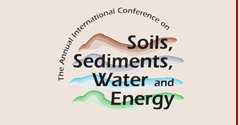Article Title
Wipe Sampling Methodologies to Assess Exposures to Lead and Cadmium in Urban Canadian Homes
Abstract
Wipe sampling methods are widely used to quantify lead (Pb) loadings inside homes. In the present study we expand the wipe sampling method to investigate other elements in addition to Pb, namely cadmium (Cd) and the soil tracer yttrium (Y).
Following the ASTM 1728 sampling protocol, 1372 wipe samples (including field blanks and duplicates) were collected from 222 homes using Ghost Wipes™. All wipe samples were digested according to a modified version of the ASTM 1644 digestion protocol in which hydrofluoric acid was added to enhance extraction efficiency, and analyzed using ICP-MS. Recoveries assessed using NIST certified reference materials were 93±6% for Pb and 88±14% for Cd (n=66).
Results indicated that 43% of Pb and 23% of Cd samples were below LOD (932 ng m-2 and 125 ng m-2 respectively). Threshold values of 125 µg m-2 for Pb and 4.4 µg m-2 for Cd, identified using Q-Q plots, were used to distinguish “elevated” loading values from "background" loading values. Indoor sources and tracked-in soil were identified as potential contributors to elevated loading values. Spearman ranking indicated strong spatial associations amongst the metals. The study shows that wipe sampling provides useful information on room-to-room variability of metals, shedding light on possible sources of metals in residential environments.
Recommended Citation
McDonald, Lauren T.; Rasmussen, Pat E.; Chénier, Marc; and Levesque, Christine
(2010)
"Wipe Sampling Methodologies to Assess Exposures to Lead and Cadmium in Urban Canadian Homes,"
Proceedings of the Annual International Conference on Soils, Sediments, Water and Energy: Vol. 15, Article 6.
Available at:
https://scholarworks.umass.edu/soilsproceedings/vol15/iss1/6
